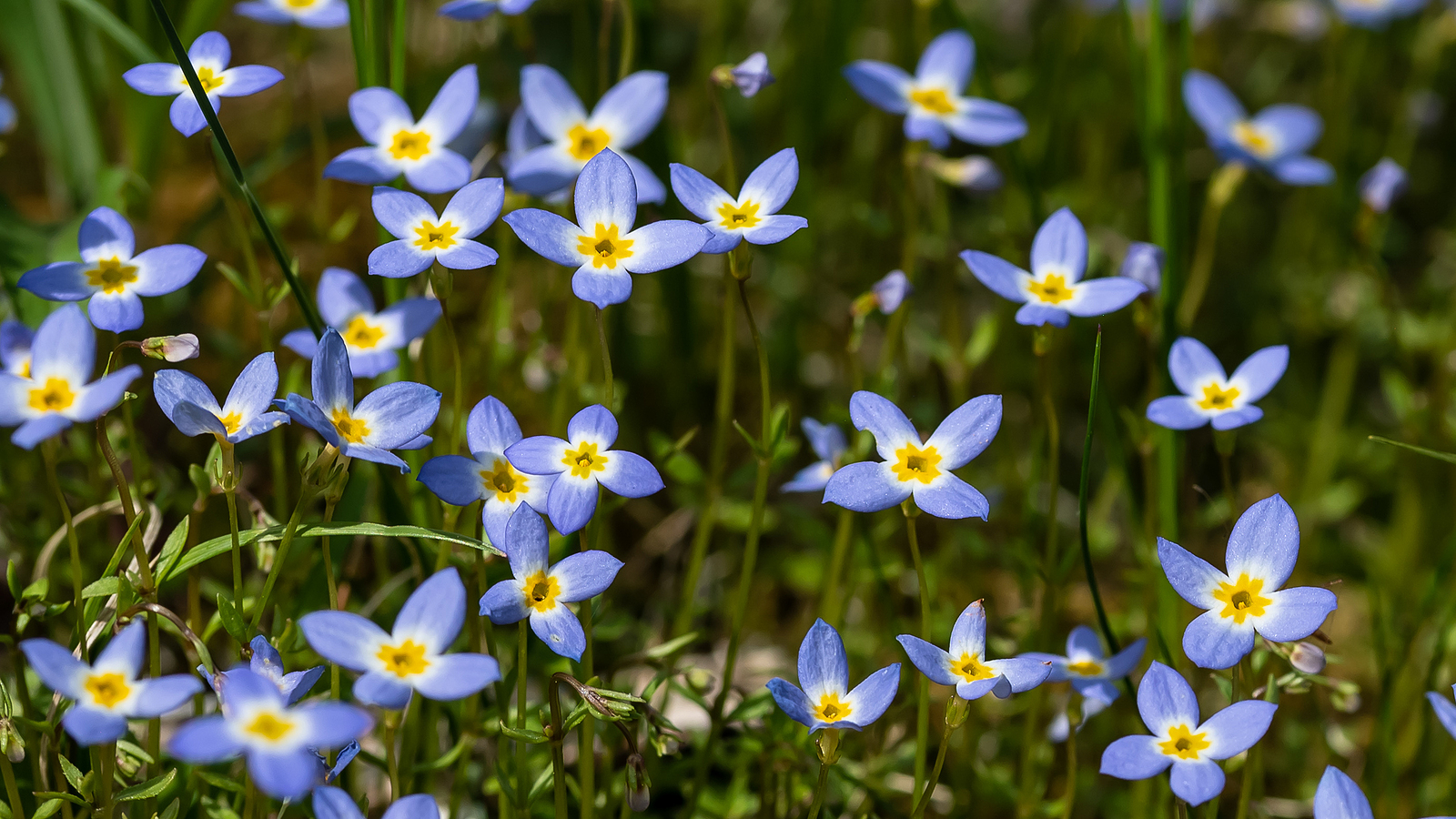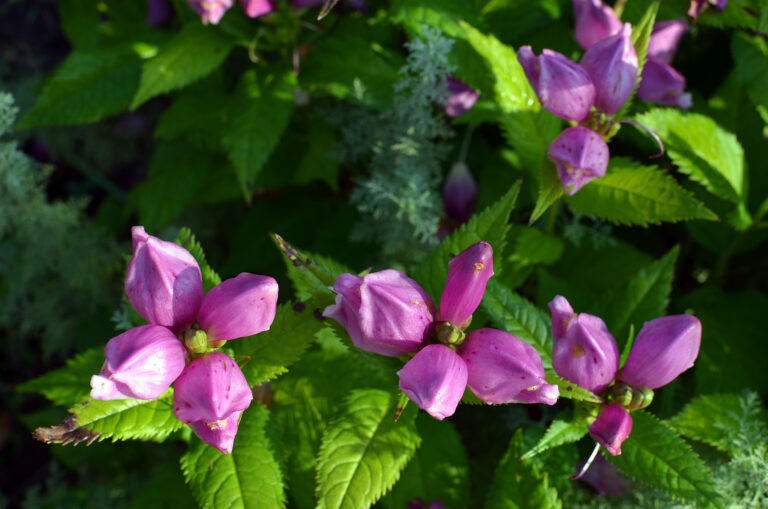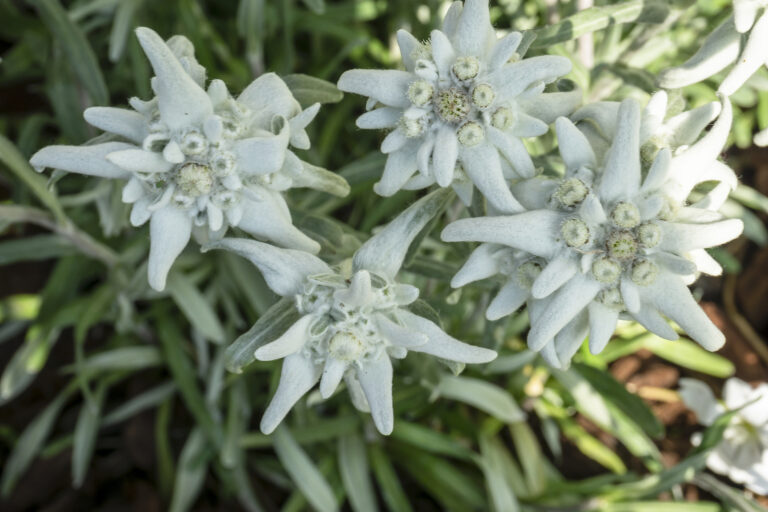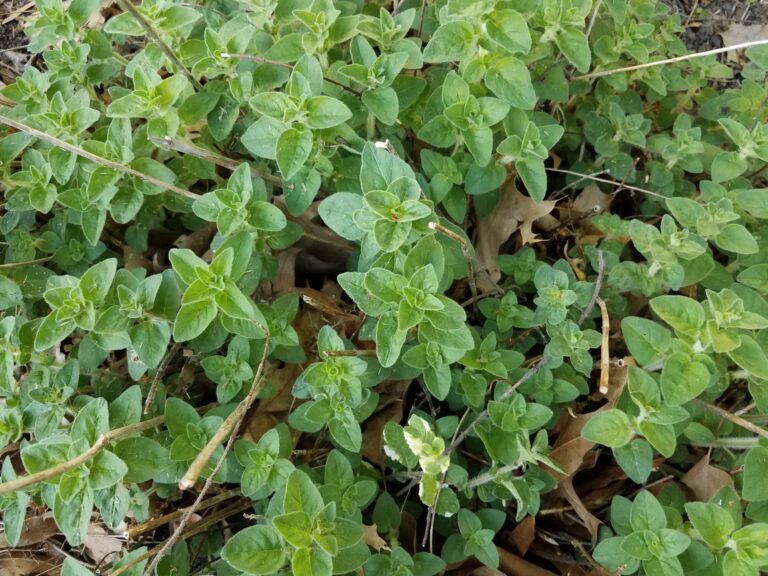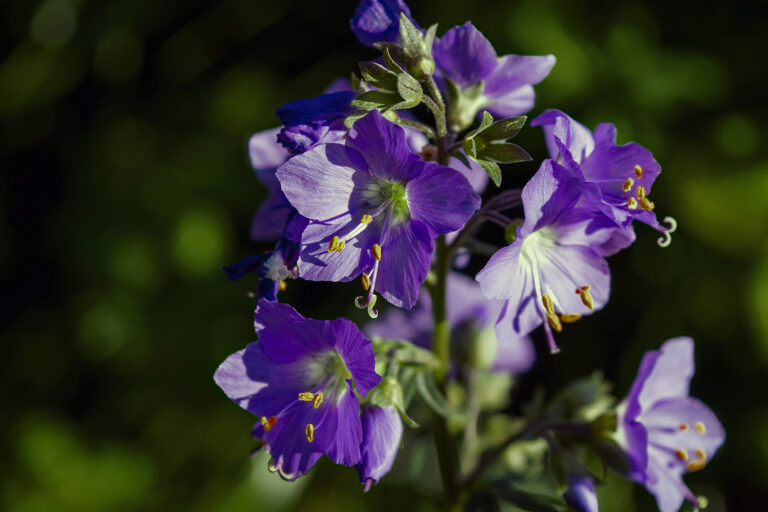How to Grow Bluets – Hedyotis
Hedyotis is a large genus of mostly low-growing perennials and annuals. Hedyotis michauxii is a species often grown in gardens and as a houseplant. It is a low, creeping plant with sky-blue flowers — four, cross-shaped petals with a creamy yellow center. Other species of Hedyotis have white flowers.
Hedyotis prefers warm soil and air temperatures. Hedyotis is weak-stemmed; it creeps through the garden rooting as it goes. The short, slender flower stalks appear in tight clusters or loose short spray. The plant will form a mat of color in spring and summer.
Hedyotis belongs to the Rubiaceae family. Members of the genus are native to tropical and subtropical regions in Asia, North America, and Africa. The Hedyotis species found in North America and sometimes treated by botanists as a separate genus called Houstonia.
Hedyotis is a low-maintenance plant that is easy to grow and care for. Hedyotis self-seeds and can easily spread into lawns and beds.
Get to know Bluets – Hedyotis
- Plant type: Perennial
- Growing zones and range: Zones 6-10
- Hardiness: Will die back in frost
- Height and width: 6 to 8 inches tall and 10 inches wide
- Foliage: Delicate tufts of foliage; small, narrow leaves arranged in opposite pairs.
- Flowers: Masses of small, cross-shaped flower of four petals that turn upward to the sky; 1/2 inch, four-petaled flowers are pale blue
- Bloom time: Mid-spring through summer
- Uses: Best in naturalistic areas such as a meadow garden or wildflower lawn or in a woodland garden under high branches trees or near a stream or pond; can be grown as a houseplant
- Common name: Bluets, Quaker ladies, Houstonia
- Botanical name: Hedyotis caerulea (Houstonia caerulea)
- Family name: Rubiaceae
- Origin: Asia, North America, and Africa

Where to plant Bluets – Hedyotis
- Hedyotis plants thrive in temperatures between 60-80°F (15-27°C). Avoid exposing them to temperatures below 50°F (10°C).
- Hedyotis plants prefer bright, indirect light. They can also tolerate some shade, but make sure they receive at least a few hours of sunlight each day.
- Hedyotis plants prefer moderate to high humidity levels. Mist the plant occasionally or place a tray of water near it to increase humidity.
- Hedyotis grows best in warm, fertile soil.
When to plant Bluets – Hedyotis
- Set Hedyotis outdoors a few weeks after the last frost in spring. Hedyotis needs warm temperatures to thrive.
- Hedyotis seeds can be sown outdoors in fall for spring growth.
Planting and spacing Bluets – Hedyotis
- Space seeds of seedlings 6 to 12 inches apart. Press seeds lightly into te soil and cover with a thin layer of soil.
How to water and feed Bluets – Hedyotis
- Keep the soil consistently moist but not waterlogged. Water your Hedyotis plant when the top inch of soil feels dry. Water sparingly in winter as the plant goes dormant.
- Fertilize your Hedyotis plant with a balanced liquid fertilizer every 2-4 weeks during the growing season (spring and summer). Avoid fertilizing during the dormant season.
Bluets – Hedyotis care
- Regularly prune your Hedyotis plant to promote bushy growth and prevent leggy stems. You can pinch back the stems to encourage branching and remove any dead or yellowing leaves. Trim back any leggy or overgrown branches to encourage new growth and maintain a compact shape.
- Trim your Hedyotis plant regularly to promote bushier growth and remove dead or damaged foliage.
- Repot your Hedyotis plant every 2 to 3 years or when it outgrows its current pot. Use a slightly larger pot and fresh soil mix.
- Hedyotis enjoys high humidity levels. Mist your plant regularly or place a humidifier nearby to keep the air moist.
Bluets – Hedyotis pests and diseases
- Keep an eye out for common houseplant pests like aphids, spider mites, and mealybugs. Treat any infestations promptly with insecticidal soap or neem oil.
Growing Bluets – Hedyotis as a houseplant
- Hedyotis plants prefer bright, indirect sunlight. Indoors, place them near a window where they can receive partial sunlight is ideal.
- Hedyotis plants prefer warm temperatures between 65-80°F (18-27°C). Protect them from drafts and sudden temperature drops, as they are sensitive to cold.
- Hedyotis plants thrive in well-draining, rich soil. A mix of potting soil and perlite or sand can help improve drainage and prevent root rot.
- Keep the soil consistently moist, but not waterlogged. Water your hedyotis plant whenever the top inch of soil feels dry to the touch. Avoid letting the soil dry out completely, as this can cause the plant to wilt.
- Hedyotis enjoys high humidity levels. Mist your plant regularly or place a humidifier nearby to keep the air moist.
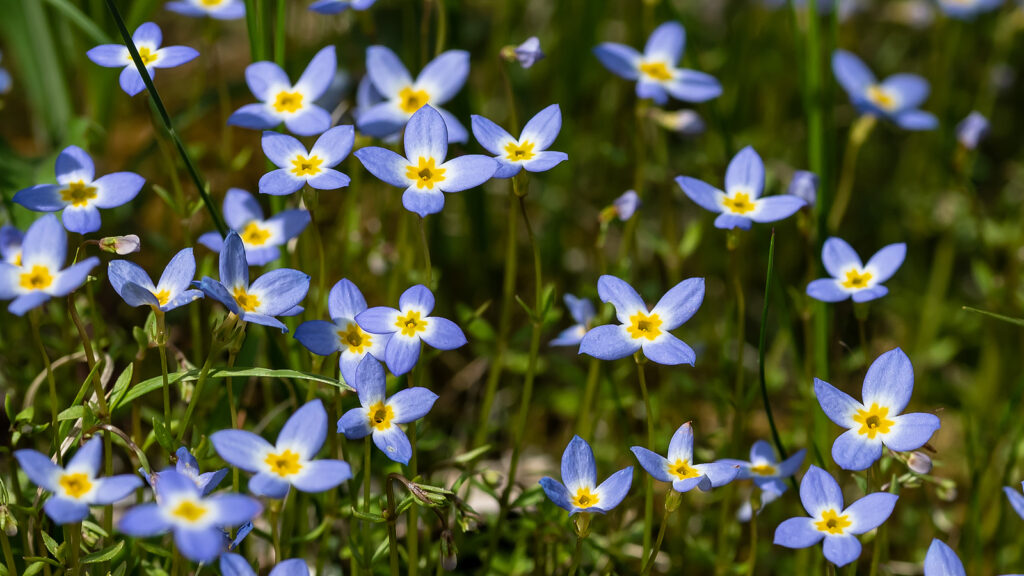
Bluets – Hedyotis propagation
- Sow Hedyotis seeds directly in the garden in early spring or fall.
- Hedyotis can be propagated by division of stem cuttings. Divide plants in early spring or fall. Root stem cuttings in spring or summer.
- Hedyotis forms clump that are self-seeding and spread via roots.
Bluets – Hedyotis varieties to grow
- Hedyotis michauxii (syn. Houstonia caerulea, Hedyotis caerulea), commonly called creeping bluets: native to southeastern United States; mat-forming plant with that is densely branched; stems root in the soil; small, nearly stalkless flowers appear across a mat of foliage; blooms profusely in spring – 4-sky blue petals with creamy yellow center.

